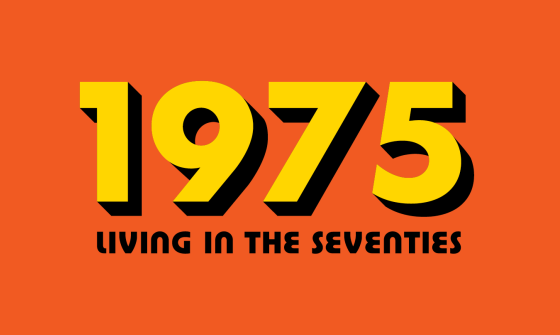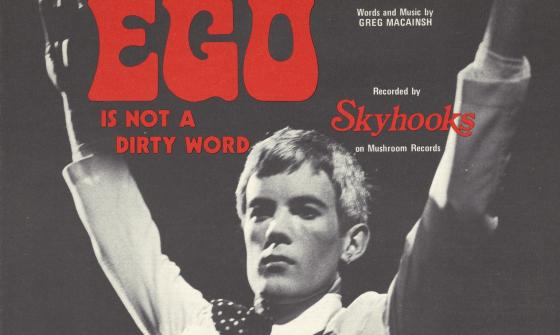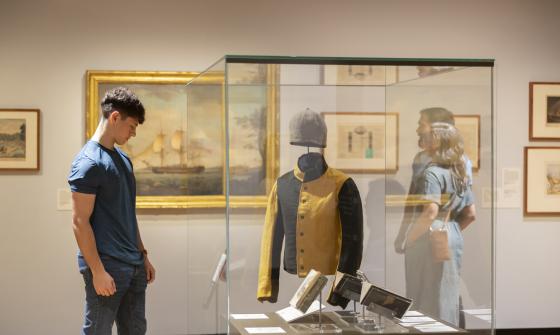1975: Exhibition themes
Good vibes
Our collective memory of 1975 is populated with celebrities, songs, television shows, cooking fads and fashion trends. Television, which had just started transmitting in colour in Australia, saturated popular culture. Talk shows, serials, music shows, comedies and advertisements were watched by nearly everyone, providing a shared set of cultural touchstones.
On the radio, Australia’s favourite glam rock band, Skyhooks, dominated with two hit albums, while Swedish pop group ABBA topped the charts. Flared jeans, platform shoes and bright colours ruled fashion tastes.
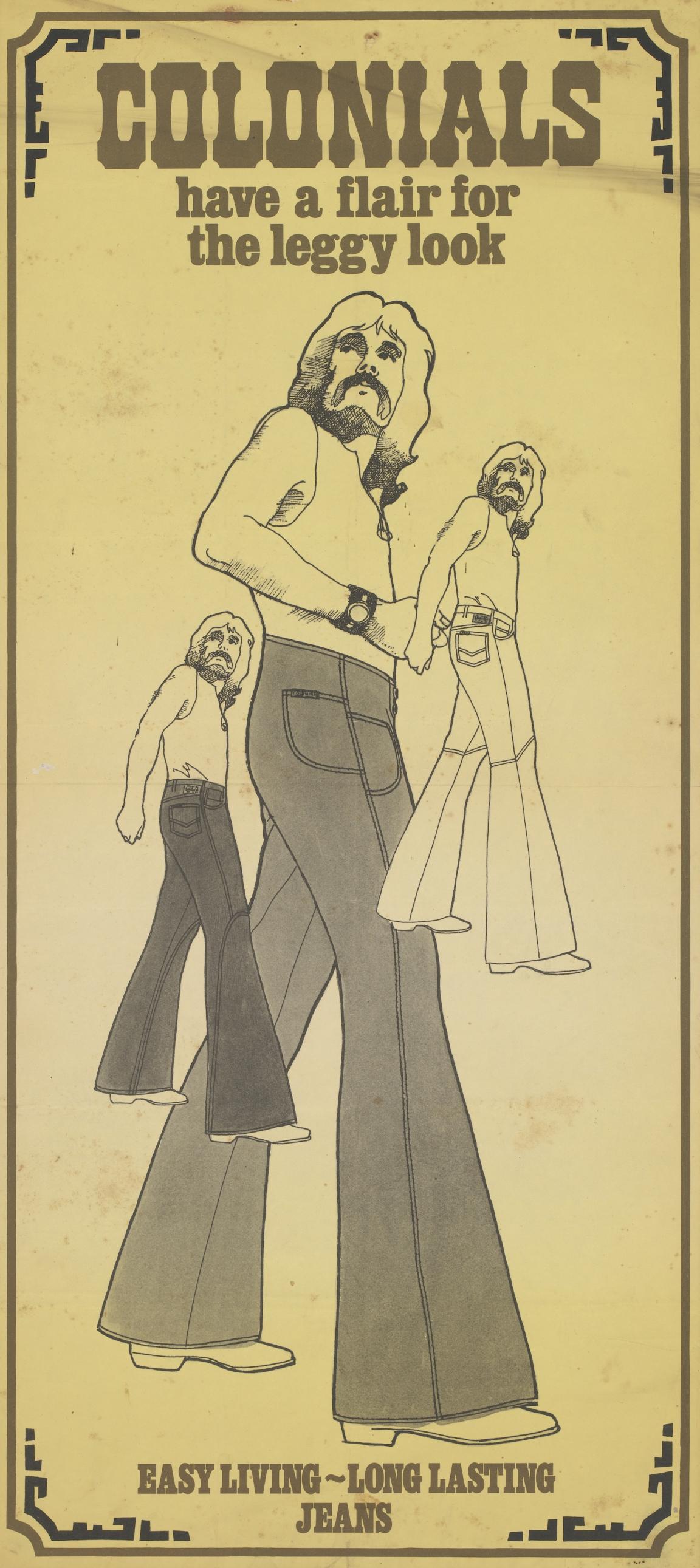
Sterling Clothing Pty Ltd, Colonials have a flair for the leggy look : easy living long lasting jeans., c. 1970, nla.gov.au/nla.obj-626480664
Sterling Clothing Pty Ltd, Colonials have a flair for the leggy look : easy living long lasting jeans., c. 1970, nla.gov.au/nla.obj-626480664
Back in the day
Looking back from the 21st century, 1975 can seem both familiar and different. In Australia, postwar migration and the baby boom had boosted the population towards 14 million. Most Australians lived in cities and relied on cars for transport. The majority of the population was of European descent, with large-scale migration from Asia and Africa only just beginning.
The mining boom, which had started in the 1960s, continued to gain momentum. Movies, radio, television, sport and live music provided much of the entertainment for this growing population. Computers and satellite technology were just beginning to be used in the workplace and at home, with the full impact of information technology still to come.
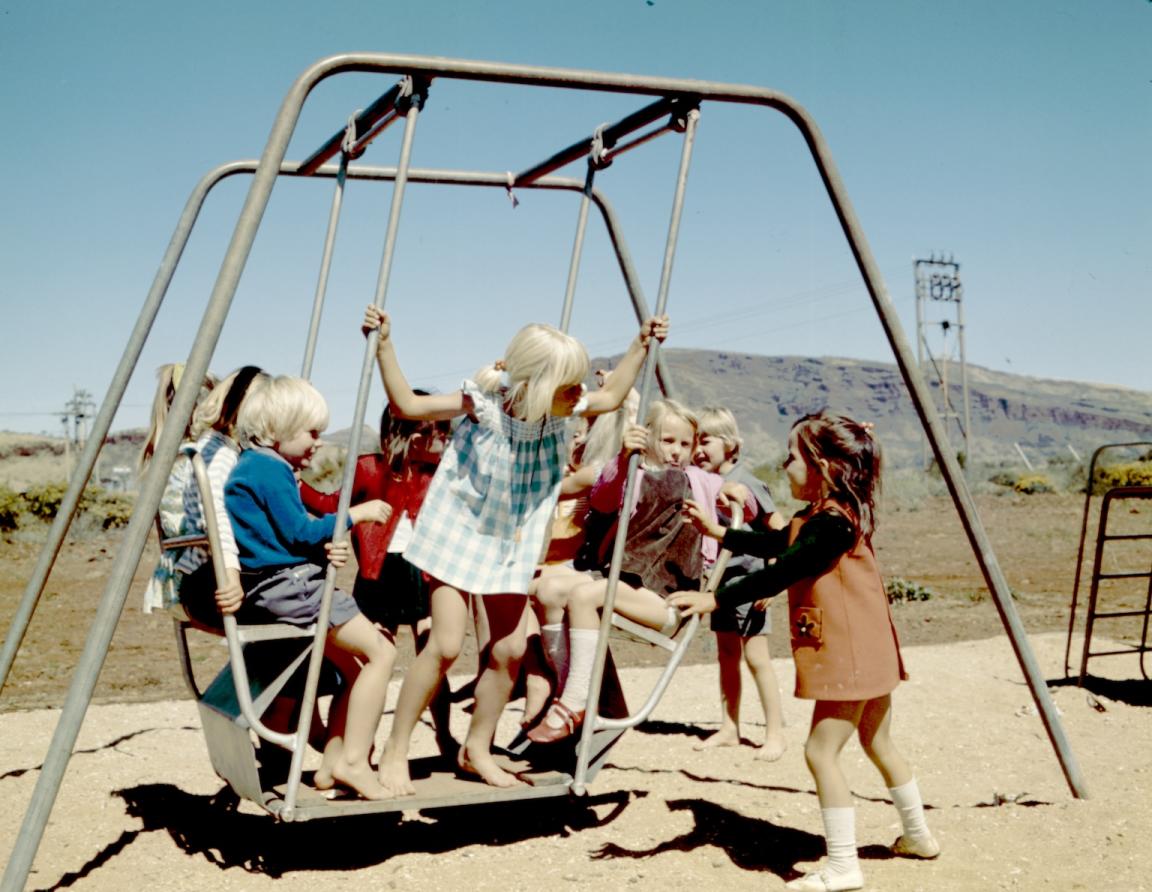
Wolfgang Sievers, Children on a swing at Tom Price, Western Australia, 1975, nla.gov.au/nla.obj-160837526
Wolfgang Sievers, Children on a swing at Tom Price, Western Australia, 1975, nla.gov.au/nla.obj-160837526
News of the day
In January 1975 Australians watched the intense media coverage of Cyclone Tracy’s devastating impact on Darwin after it had torn through the city in the early hours of the Christmas Day just past. Sixty-six people were killed, and over 80 per cent of the city’s housing was destroyed.
On 5 January the bulk carrier Lake Illawarra collided with the Tasman Bridge in Hobart, collapsing a span of the bridge and killing 12 people. On 30 April North Vietnamese troops took control of South Vietnam’s capital, Saigon, ending the Vietnam War. Fighting continued to rage elsewhere, however, with conflicts in South-East Asia, Angola, Mozambique and East Timor (Timor-Leste).

Bruce Howard, Prime Minister Gough Whitlam is taken on a tour of the wreckage in Darwin, 1974, nla.gov.au/nla.obj-148158669
Bruce Howard, Prime Minister Gough Whitlam is taken on a tour of the wreckage in Darwin, 1974, nla.gov.au/nla.obj-148158669
We are women
1975 was a pivotal year in the Second Wave feminist movement of the 1960s–70s. Many feminists banded together to advocate for women’s rights and greater awareness of the barriers that held them back from achieving equality.
The United Nations recognised the growing power of ‘women’s liberation’ by declaring 1975 to be International Women’s Year. The aim was to end entrenched discrimination against women and enable them to participate more fully in economic, social and political life. International Women’s Year was marked in Australia and provided a platform for some women to have a light shone on their experiences and aspirations. Since 1975, 8 March has been officially recognised as International Women’s Day.
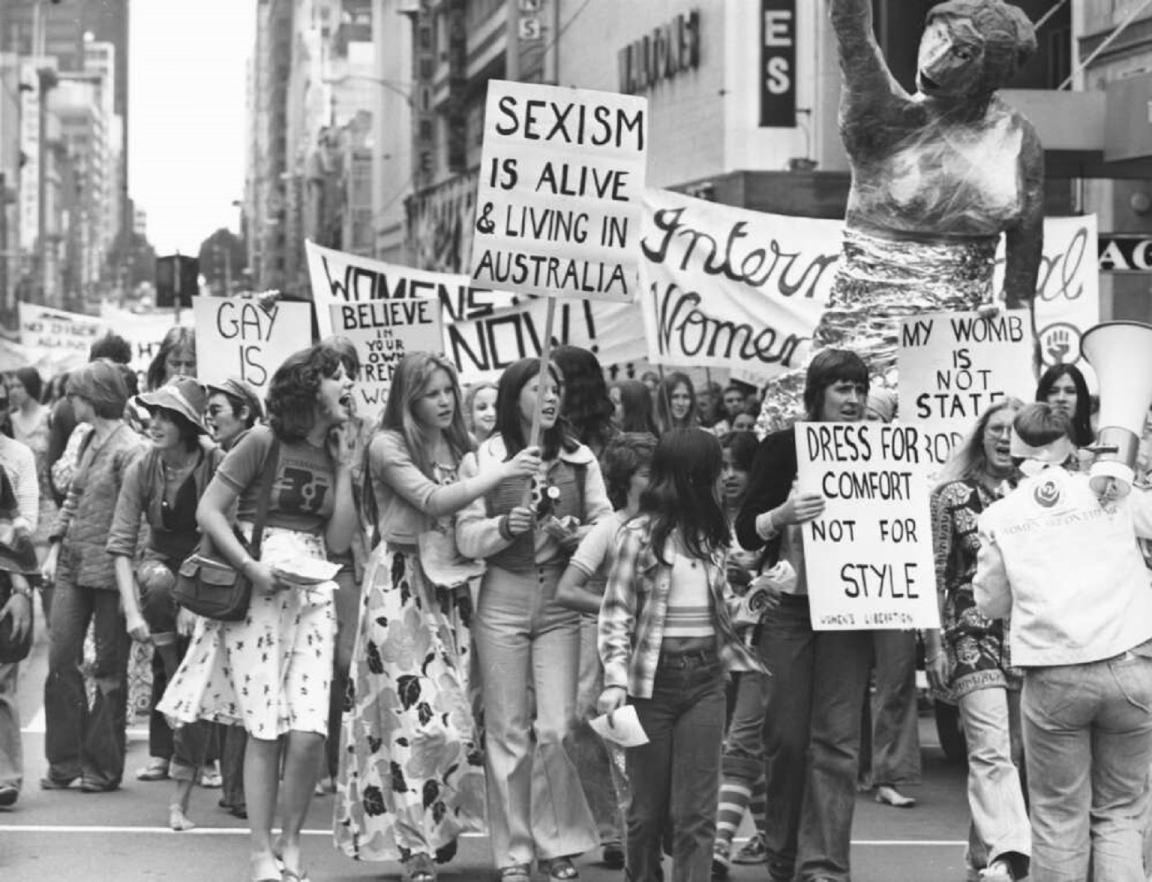
John McKinnon, Women on the march wave their placards at the International Women's Day march, Melbourne, March 8, 1975, nla.gov.au/nla.obj-137045864
John McKinnon, Women on the march wave their placards at the International Women's Day march, Melbourne, March 8, 1975, nla.gov.au/nla.obj-137045864
Changing times
The 1970s saw dramatic changes in Australian cultural and political life. After 23 years of conservative government the Labor Party, which came to power in 1972 under the leadership of Gough Whitlam, began delivering an aggressive reform agenda. Policies implemented included abolishing tertiary education fees, reducing the voting age to 18, establishing universal healthcare and passing the Racial Discrimination Act 1975. Indigenous Australians were also pressuring the government to recognise their land rights.
The Whitlam government made support for the arts a priority, and encouraged artists to tell Australian stories.
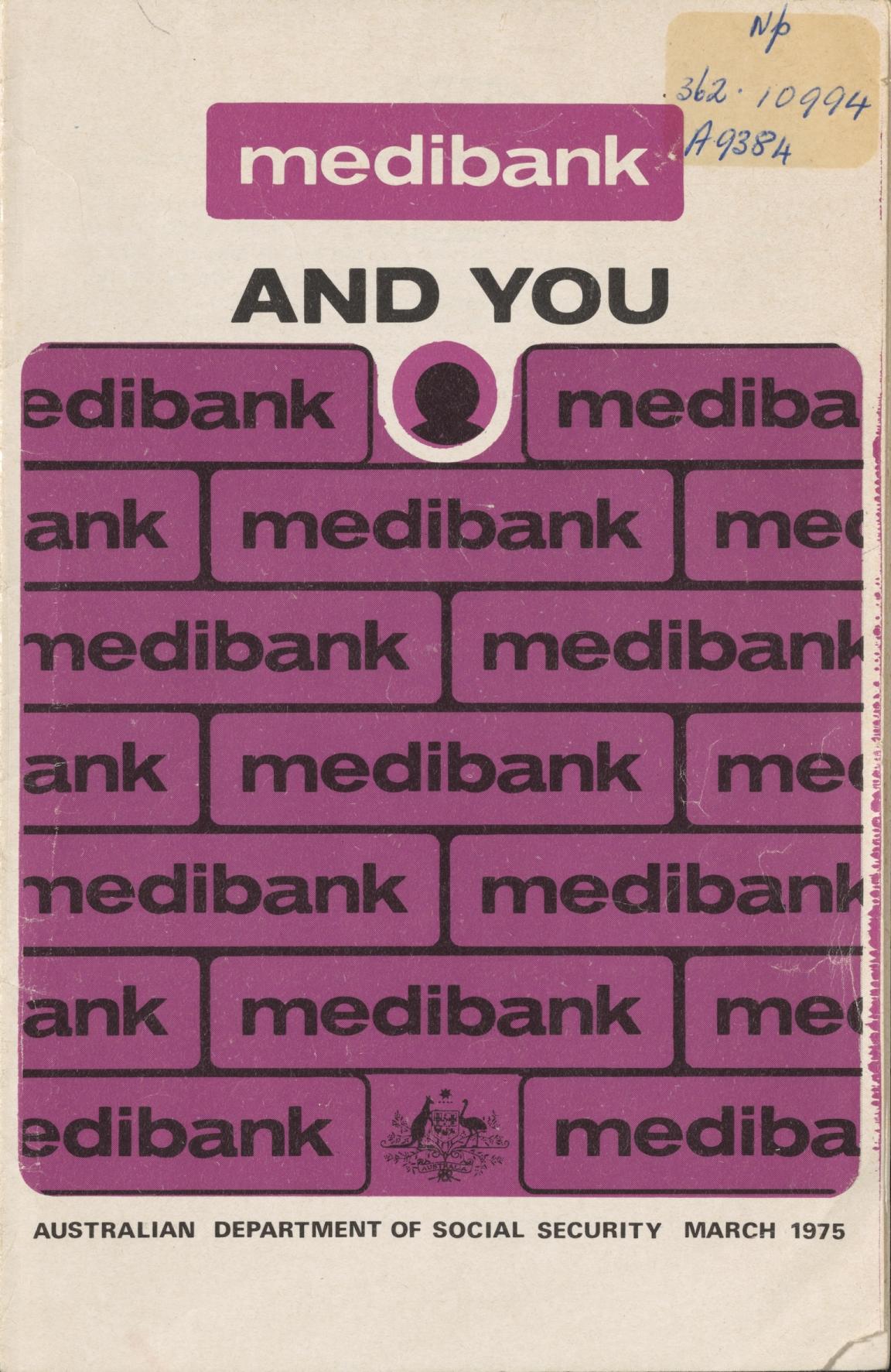
Australian Department of Social Security, Medibank and you, 1975, nla.gov.au/nla.cat-vn68648
Australian Department of Social Security, Medibank and you, 1975, nla.gov.au/nla.cat-vn68648
The Dismissal
As 1975 came to a close, voters were worried by rampant inflation and economic stagnation. After a series of controversies and ministerial sackings in 1974–75, the opposition parties blocked the federal Budget. The deadlock in the Senate was dramatically broken on 11 November when Governor-General Sir John Kerr dismissed Whitlam’s government and appointed Liberal leader Malcolm Fraser as caretaker PM. The federal election held soon afterwards confirmed the Coalition’s hold on power.
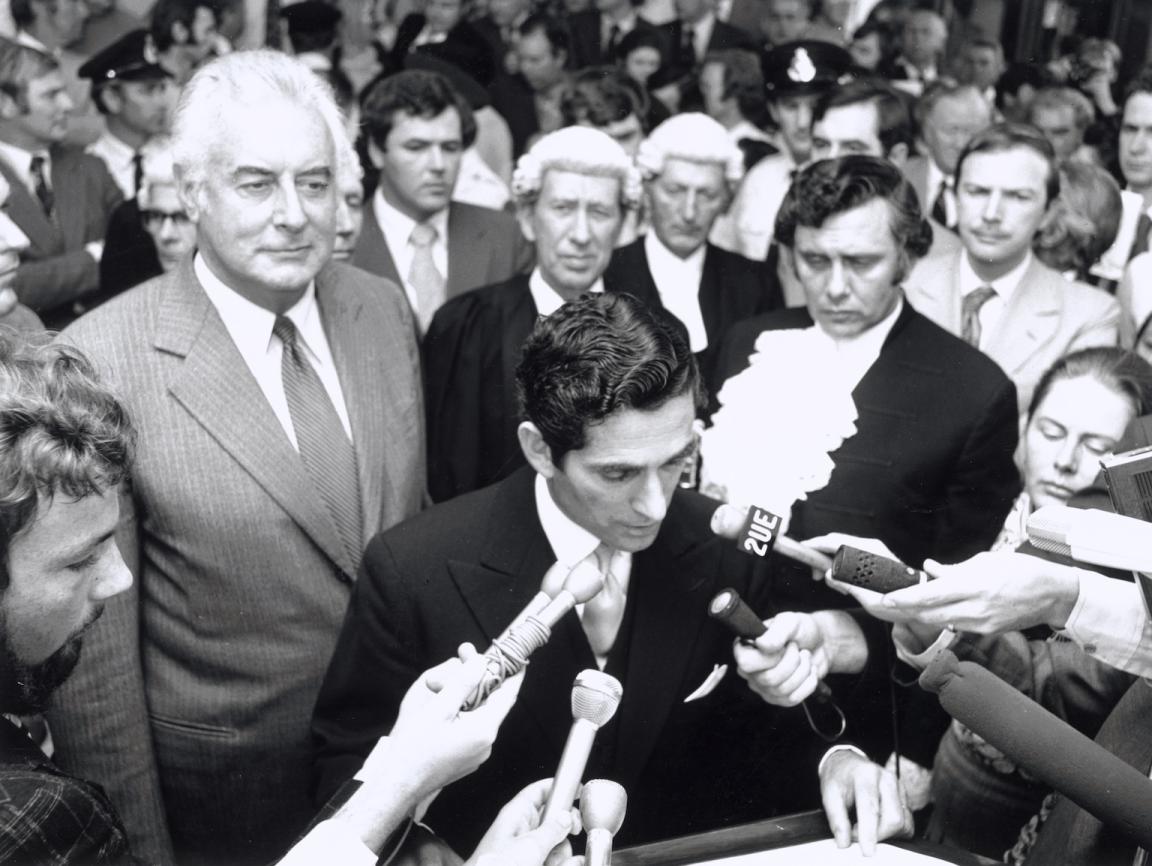
Mr David Smith, official secretary to the Governor-General, reads the proclamation dissolving both Houses of Parliament on the steps of Parliament House, Canberra, on November 11, 1975. Behind him is Mr Whitlam, [1], nla.gov.au/nla.obj-147276195
Mr David Smith, official secretary to the Governor-General, reads the proclamation dissolving both Houses of Parliament on the steps of Parliament House, Canberra, on November 11, 1975. Behind him is Mr Whitlam, [1], nla.gov.au/nla.obj-147276195
Visit us
Find our opening times, get directions, join a tour, or dine and shop with us.
